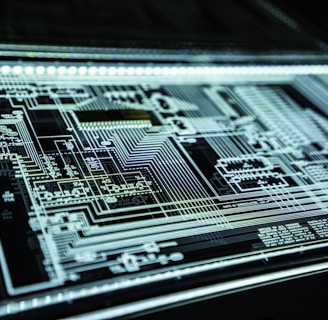From Labor-Intensive to Smart & Scalable: The DeepTech Leap for Factories
Discover how DeepTech transforms labor-intensive factories into smart, scalable operations using AI, robotics, IoT, and predictive automation technologies.
Vishal P. Singh
5/15/20253 min read


For decades, factories have operated on the strength of manual labor, routine schedules, and linear workflows. While this approach fueled early industrial growth, it's become increasingly unsustainable in today's competitive and rapidly evolving manufacturing landscape. The global shift toward digitization, efficiency, and agility demands a different approach—one powered by DeepTech.
DeepTech, short for deep technology, refers to the integration of advanced technologies such as artificial intelligence (AI), machine learning, robotics, Internet of Things (IoT), edge computing, and computer vision into real-world industrial systems. Far from being futuristic concepts, these tools are already reshaping how factories function—making them smarter, faster, and scalable like never before.
The Problem with Labor-Heavy Manufacturing
Labor-intensive operations are not only resource-consuming but also prone to inefficiencies. Manual quality checks, handwritten logs, and reactive maintenance lead to frequent errors, downtime, and inconsistent output. In such environments, scaling up usually means hiring more people and increasing supervision, which adds cost without guaranteeing performance.
This traditional model also struggles with:
High operational costs
Human error and fatigue
Slow decision-making due to data silos
Difficulty in meeting dynamic customer demands
The result? Manufacturers find it harder to stay competitive, especially when global rivals are embracing automation and intelligence at every level.




Getting Started with DeepTech
Making the leap doesn’t mean overhauling everything overnight. The smartest approach is phased and focused:
Start with an audit to identify inefficiencies
Run a pilot project on a single production line
Invest in training to align your workforce with new systems
Scale gradually using modular DeepTech tools
Leverage real-time analytics for ongoing optimization
With the right roadmap, even small and mid-sized factories can go smart—without burning capital or halting operations.
Final Thoughts
The age of labor-intensive manufacturing is fading. In its place is a smarter, scalable, and more resilient future driven by DeepTech. As more factories across India and the world adopt these intelligent technologies, the competitive gap between traditional and modern operations will only grow wider.
If you're serious about long-term success, now is the time to embrace the DeepTech leap. Because factories of the future aren’t just automated—they’re intelligent, connected, and built to scale.
The DeepTech Advantage
DeepTech introduces a fundamental shift in how factories think, act, and evolve. Instead of relying purely on manpower, production is augmented by intelligent systems that can sense, decide, and act—often in real time.
Here’s how DeepTech transforms labor-intensive environments into smart, scalable factories:
1. AI-Powered Decision Making
Artificial Intelligence enables machines to analyze vast datasets from sensors, machines, and processes to uncover insights. Whether it’s predicting demand, optimizing energy use, or detecting equipment anomalies, DeepTech systems empower faster and better decision-making without manual intervention.
2. Smart Automation with Robotics
From robotic arms assembling parts to autonomous vehicles moving inventory across warehouse floors, robotics is revolutionizing repetitive tasks. These systems reduce reliance on manual labor while improving accuracy and speed. Better yet, DeepTech ensures these robots adapt based on data and feedback.
3. Predictive Maintenance with IIoT
Through Industrial IoT, machines continuously monitor their own performance and send real-time alerts if something is off. Predictive maintenance powered by DeepTech helps prevent breakdowns, reducing downtime and maintenance costs by up to 40%.
4. Scalability Through Modular Systems
Unlike legacy setups that require major capital to expand, DeepTech enables modular growth. Need more capacity? Simply integrate another vision system or connect an additional dashboard. The architecture grows with you—without disrupting operations.
5. Real-Time Quality Control
Computer vision and AI detect defects at every stage of production—far beyond human visibility. This allows for in-line correction, eliminating wastage and helping manufacturers move closer to zero-defect goals.


Human + Machine: A Smarter Collaboration
A major misconception is that DeepTech removes people from the equation. In reality, it empowers them. Workers are freed from low-value, repetitive tasks and are reskilled to operate, maintain, and improve smart systems. This transition creates a more engaged, higher-skilled workforce.
In fact, many successful factories are deploying blended teams—where human intuition and machine precision complement each other. This synergy leads to fewer mistakes, higher throughput, and greater innovation.
Real-World Impact of DeepTech Integration
Factories that have embraced DeepTech report significant improvements across key metrics:
30–70% reduction in manual labor dependency
Up to 50% fewer defects via AI-based inspections
20–40% increase in production output with automation
Faster time-to-market with smarter demand forecasting
These gains not only improve margins but also enhance flexibility and resilience—two traits essential in volatile markets.
